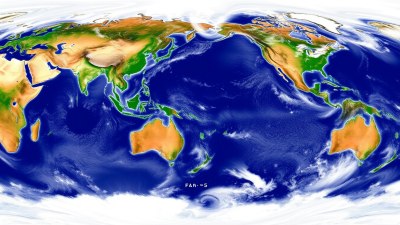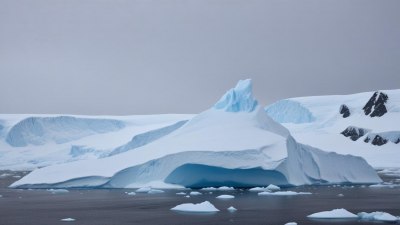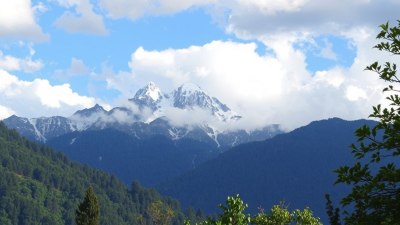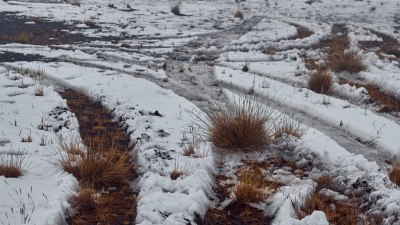How El Niño and La Niña Reshape Global Weather
Explore how El Niño and La Niña impact global weather patterns, influencing rainfall, temperature, and natural disasters worldwide.

The alternating climate patterns known as El Niño and La Niña are key drivers of global weather variability. These phenomena, which originate in the tropical Pacific Ocean, influence atmospheric circulation and oceanic conditions around the world. Their effects extend far beyond the Pacific basin, shaping regional climates, altering precipitation patterns, and triggering extreme weather events. Understanding how El Niño and La Niña reshape global weather is vital for forecasting and mitigating the impacts on agriculture, water resources, ecosystems, and human societies.
What Are El Niño and La Niña?
El Niño and La Niña represent opposite phases of the El Niño-Southern Oscillation (ENSO) cycle. ENSO is a natural climate phenomenon involving periodic fluctuations in sea surface temperatures (SSTs) and atmospheric pressure across the equatorial Pacific Ocean.
El Niño, meaning "the little boy" in Spanish, is characterized by unusually warm SSTs in the central and eastern tropical Pacific. This warming typically occurs every two to seven years and lasts for about 9 to 12 months. In contrast, La Niña, meaning "the little girl," is marked by cooler than average SSTs in the same regions and tends to persist for similar durations.
Mechanisms Behind El Niño and La Niña
The tropical Pacific Ocean features a dynamic interplay between trade winds, ocean currents, and atmospheric pressure systems. Under normal conditions, strong easterly trade winds push warm surface water westward toward the western Pacific and the maritime continent. This causes warm water to accumulate near Indonesia and Australia, while colder waters rise along the South American coast in a process called upwelling.
During an El Niño event, the easterly trade winds weaken or reverse. This shift allows warm water to spread eastward along the equator, suppressing upwelling of cold, nutrient-rich water near South America. The ocean-atmosphere coupling alters atmospheric circulation patterns, often weakening the Walker Circulation, which typically drives tropical weather across the Pacific.
La Niña exhibits nearly opposite conditions. The trade winds intensify, pushing warm water farther west and enhancing upwelling off the South American coast. This leads to below-average SSTs in the central and eastern Pacific and reinforces stronger Walker Circulation patterns.
Global Atmospheric Responses
The deviations in sea surface temperatures associated with El Niño and La Niña generate large-scale changes in atmospheric pressure and wind patterns. These changes influence the jet streams — narrow bands of fast-moving air currents — and alter storm tracks across continents.
During El Niño, the warming of the central and eastern Pacific shifts the location of tropical convection and alters the location of the subtropical jet stream. This leads to variations in rainfall and temperature anomalies worldwide, often resulting in wetter conditions in the southern United States and Peru, and droughts in Australia and Indonesia.
Conversely, La Niña strengthens the Pacific jet stream and often brings wetter conditions to Australia, Indonesia, and parts of Southeast Asia, while causing drier weather in the southwestern United States. The cold ocean temperatures also affect tropical cyclone activity, usually diminishing Atlantic hurricane frequency during El Niño and boosting it during La Niña.
Regional Impacts Across Continents
North America: El Niño tends to bring wetter and cooler winters to the southern United States, whereas the northern states and Canada often experience warmer and drier conditions. La Niña produces the opposite effect with colder winters in the northern US and Canada, and drier weather in the south.
South America: Parts of western South America, especially Peru and Ecuador, usually face increased rainfall and flooding during El Niño. The warming waters disrupt marine ecosystems and fisheries due to reduced upwelling. La Niña, by contrast, brings drier and cooler conditions.
Asia and Australia: El Niño often triggers droughts, intensified heatwaves, and wildfires in Indonesia, Australia, and surrounding areas, harming agriculture and ecosystems. La Niña generally improves rainfall and reduces drought risk in these regions.
Africa: The eastern and southern parts experience drought during El Niño due to suppressed rainfall, while La Niña usually enhances precipitation and reduces drought hazards in eastern Africa.
Effects on Agriculture and Water Resources
The climate disruptions caused by El Niño and La Niña significantly impact global food production and water availability. For example, the wetter conditions in parts of South America during El Niño can cause flooding that damages crops, while droughts in Indonesia and Australia reduce agricultural yields. Conversely, La Niña can help replenish water resources and support farming in some regions but may induce droughts elsewhere.
The variability in rainfall and temperature stresses irrigation systems and water management, increasing the risk of shortages and conflicts over water. Understanding ENSO’s patterns helps farmers and policymakers prepare for adverse conditions by changing planting schedules, managing water resources more prudently, and adopting crop varieties resilient to droughts or floods.
Influence on Natural Disasters
The altered weather patterns during El Niño and La Niña contribute to extreme weather and natural disasters globally. El Niño frequently correlates with increased incidences of floods, landslides, and storms in some regions, while elevating wildfire risk and drought severity in others.
The reduced upwelling during El Niño can devastate marine life and fisheries, with ripple effects on the economy and food security. La Niña’s enhanced cyclone activity, especially in the Atlantic basin, poses heightened threats to coastal communities and infrastructure.
ENSO Prediction and Monitoring
Scientists continuously monitor ENSO through a combination of satellite observations, ocean buoys, and climate models. Key indicators like sea surface temperature anomalies, trade winds, and atmospheric pressure patterns offer clues to developing El Niño or La Niña events.
Advanced forecasting techniques enable climate centers to predict ENSO events several months ahead, allowing governments, farmers, and disaster response agencies to take precautionary measures. However, the exact timing, intensity, and duration of these events remain challenging to forecast due to the complex interactions within the ocean-atmosphere system.
ENSO in a Changing Climate
The impact of global warming on ENSO remains an active area of research. Some studies suggest that climate change may alter the frequency, intensity, or spatial patterns of El Niño and La Niña, potentially intensifying their weather impacts. For instance, stronger El Niño events could exacerbate droughts and floods, while changes in ocean temperatures might shift the typical regions affected.
A better grasp of how ENSO behaves under warming scenarios is critical for future climate adaptation and disaster risk reduction strategies.
Broader Climatic Connections
ENSO interacts with other climate phenomena such as the Indian Ocean Dipole, the Pacific Decadal Oscillation, and the Madden-Julian Oscillation, resulting in complex global weather patterns. These interactions can amplify or dampen ENSO’s effects, making regional climate responses sometimes unpredictable.
Additionally, teleconnections—remote climate influences exerted by ENSO—affect distant regions like Europe and the Arctic, linking tropical Pacific conditions with winter weather in places thousands of kilometers away.
Historical and Societal Impacts
El Niño events have historically been linked with significant societal impacts such as famines, water shortages, and economic losses. For example, the strong 1997-1998 El Niño caused severe flooding in South America, droughts in Southeast Asia, and extensive forest fires in Indonesia.
Communities dependent on stable rainfall and fisheries face heightened vulnerability during ENSO cycles, underscoring the necessity for international cooperation and resource-sharing to address these challenges.
Future Research Directions
Ongoing advances in oceanography, meteorology, and climate science continue to improve ENSO understanding. Deployments of enhanced ocean monitoring networks and the growth of supercomputing capabilities facilitate higher resolution climate models that capture ENSO dynamics more accurately.
Emerging research also focuses on the societal dimensions of ENSO, studying how human behavior, land use, and policy frameworks modulate vulnerability and resilience to ENSO-related weather extremes.
Adapting to ENSO Variability
Proactive adaptation measures include developing robust early warning systems, diversifying crops to withstand variable rainfall, implementing efficient water management, and reinforcing disaster preparedness. Integrating traditional knowledge with scientific forecasts can enhance community resilience.
International collaboration on data sharing and unified response plans is crucial for managing transboundary impacts of ENSO, especially as its effects span multiple countries.
In summary, El Niño and La Niña remain pivotal forces shaping global weather patterns. Their complex ocean-atmosphere interactions drive substantial variability in temperature, precipitation, and extreme events worldwide. Accurate prediction and effective adaptation to ENSO’s impacts are essential to safeguarding ecosystems, economies, and societies across the globe.











